Adult Butterflies
These are the adult butterflies that we have in "Butterflies in the Garden"
Michigan Butterflies
Monarch / Red Admiral / Painted Lady / Common Buckeye
Outside Michigan Butterflies
Orange Julia / Zebra Longwing / White Peacock / Southern White / Gulf Fritillary
Monarch
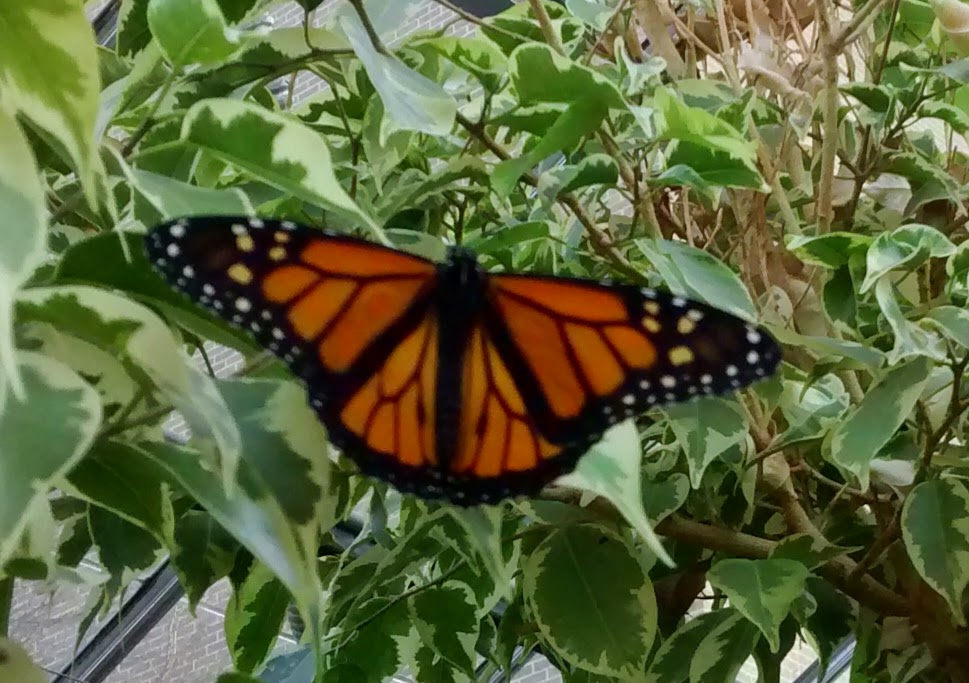
Scientific name: Danaus plexippus
Native to:
Southern Canada south through all of the United States, Central America, and most of South America. Also present in Australia, Hawaii, and other Pacific Islands.
Caterpillar host plants:
Milkweeds including common milkweed (Asclepias syriaca), swamp milkweed (A. incarnata), and showy milkweed (A. speciosa); and milkweed vine in the tropics. Most milkweeds contain cardiac glycosides which are stored in the bodies of both the caterpillar and adult. These poisons are distasteful and emetic to birds and other vertebrate predators. After tasting a Monarch, a predator might associate the bright warning colors of the adult or caterpillar with an unpleasant meal, and avoid Monarchs in the future.
Adult food plants:
Nectar from all milkweeds. Early in the season before milkweeds bloom, Monarchs visit a variety of flowers including dogbane, lilac, red clover, lantana, and thistles. In the fall adults visit composites including goldenrods, blazing stars, ironweed, and tickseed sunflower.
Interesting facts:
Adults make massive migrations from August-October, flying thousands of miles south to hibernate along the California coast and in central Mexico. A few overwinter along the Gulf coast or south Atlantic coast. Along the way, Monarchs stop to feed on flower nectar and to roost together at night. At the Mexico wintering sites, butterflies roost in trees and form huge aggregations that may have millions of individuals.
Identification:
Upperside of male is bright orange with wide black borders and black veins; hindwing has a patch of scent scales. Upperside of the female is orange-brown with wide black borders and blurred black veins. Both sexes have white spots on borders and apex.
Red Admiral
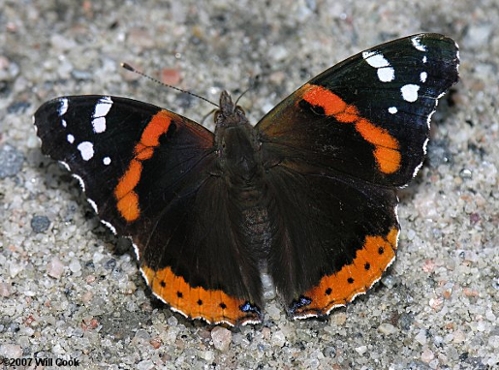
Scientific name: Vanessa atalanta
Native to:
Guatemala north through Mexico and the United States to northern Canada; Hawaii, some Caribbean Islands, New Zealand, Europe, Northern Africa, Asia. Cannot survive coldest winters; most of North America must be recolonized each spring by southern migrants.
Caterpillar host plants:
Plants of the nettle family (Urticaceae) including stinging nettle (Urtica dioica), tall wild nettle (U. gracilis), wood nettle (Laportea canadensis), false nettle (Boehmeria cylindrica), pellitory (Parietoria pennsylvanica), mamaki (Pipturus albidus), and possibly hops (Humulus).
Adult food plants:
Red Admirals prefer sap flows on trees, fermenting fruit, and bird droppings; visiting flowers only when these are not available. Then they will nectar at common milkweed, red clover, aster, and alfalfa, among others.
Interesting facts:
Generally two broods from March through October in the north. Overwinters in south Texas from October through March.
Identification:
Upperside is black with white spots near the apex; forewing with red median band, hindwing with red marginal band. The winter form is smaller and duller, summer form larger and brighter with an interrupted forewing band.
Painted Lady
Scientific name: Vanessa cardui
Native to:
Painted ladies are one of the most widely distributed species of butterfly. They can be found on every continent in the world except Antarctica and Australia.
Caterpillar host plants:
Caterpillars eat the leaves from plants such as cheeseweed, thistles, dwarf nettle, lupine, fiddleneck, and many different members of the daisy family.
Adult food plants:
Adults eat nectar from flowers, such as aster, cosmos, blazing star, iron weed, joe-pye, red clover, button bush, privet, milkweeds, and thistles.
Interesting facts:
Eggs of the Painted Lady appear to be pale green in color. Caterpillars are grayish brown and darker at the ends. They have a yellow stripe running down the back of their body, and spikes along the back and sides of their body.
Identification:
Common Buckeye
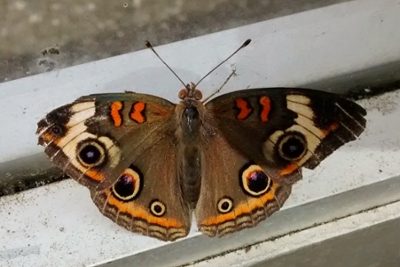
Scientific name: Junonia coenia
Native to:
Resident in the southern United States and north along the coasts to central California and North Carolina; south to Bermuda, Cuba, Isle of Pines, and southern Mexico. Adults from the south's first brood migrate north in late spring and summer to temporarily colonize most of the United States and parts of southern Canada.
Caterpillar host plants:
Plants from the snapdragon family including snapdragon (Antirrhinum) and toadflax (Linaria); the plantain family including plantains (Plantago); and the acanthus family including ruellia (Ruellia nodiflora).
Adult food plants:
Favorite nectar sources are composites including aster, chickory, gumweed, knapweed, and tickseed sunflower. Dogbane, peppermint, and other flowers are also visited.
Interesting facts:
The eyespots may be used to scare away predators.
Identification:
Upperside is brown. Forewing with 2 orange cell bars and 2 eyespots. Hindwing has 2 eyespots; upper one is largest and contains a magenta crescent.
Orange Julia
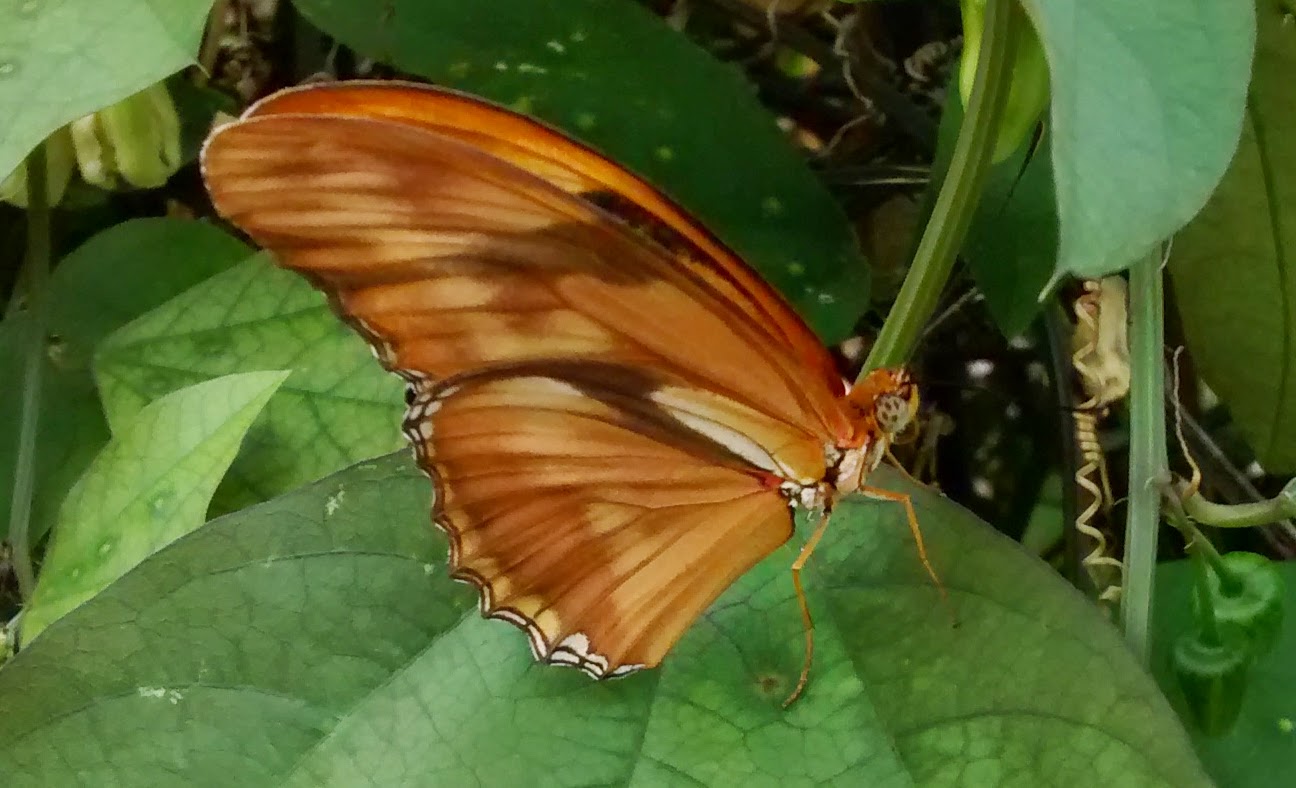
Scientific name: Dryas iulia
Native to:
Southern Florida and south Texas. Strays to the north in summer.
Caterpillar Host plants:
Passion-vines including Passiflora lutea in Texas.
Adult Food:
Nectar from flowers including lantana and shepherd\'s needle; probably others.
Identification:
Forewings elongate. Male bright orange above and below; upperside of hindwing with narrow black border on outer margin. Female duller orange, with more black markings above.
Zebra Longwing
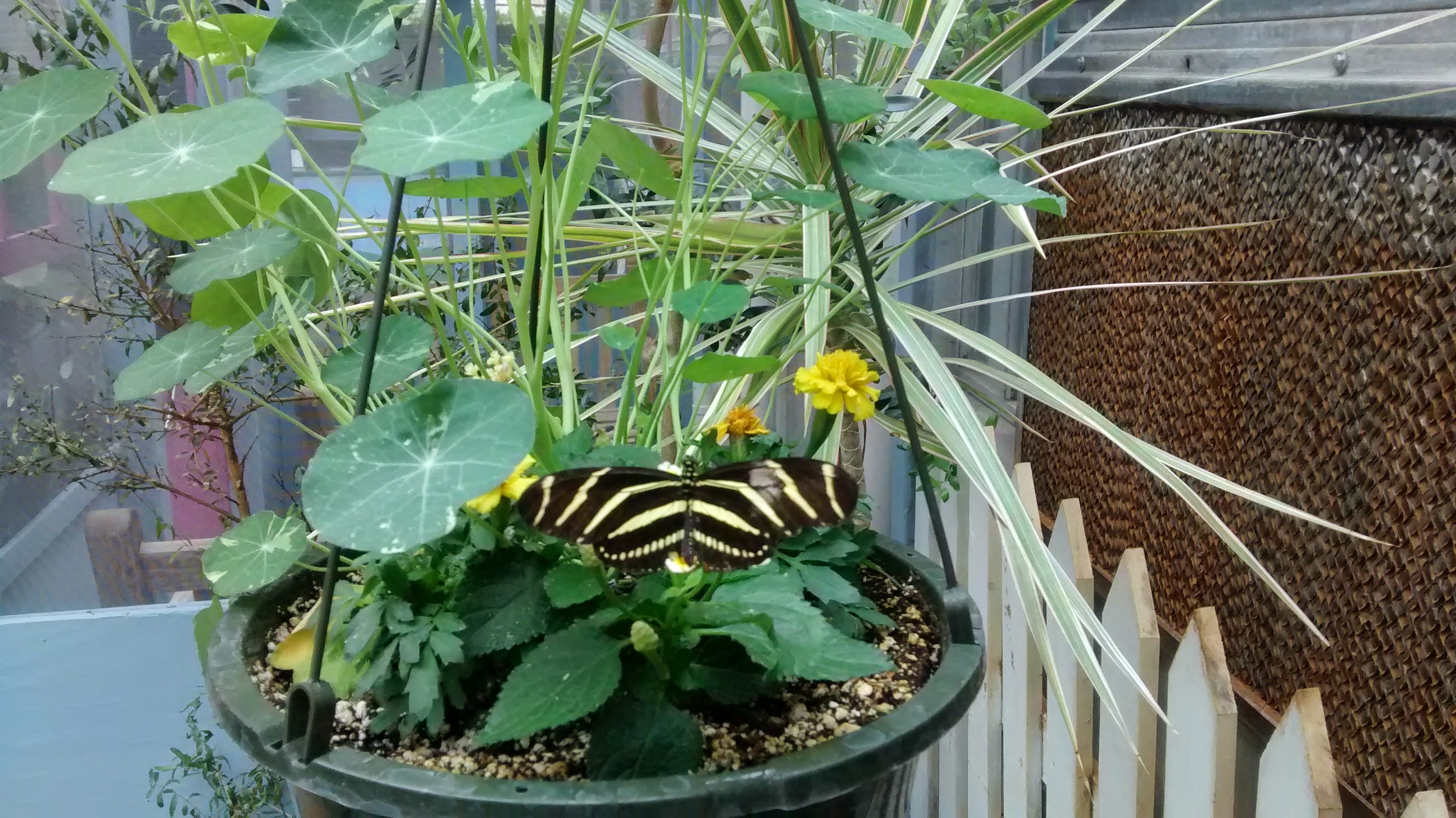
Scientific name: Heliconius charitonia
Native to:
The southern United States from Texas to Florida. It is also found in Central America and northern South America.
Caterpillar host plants:
Caterpillars eat the leaves of passion flowers. The passion flower contains a toxin that gives the zebra longwing an unpleasant taste and makes it poisonous to predators.
Adult Food plants:
The butterfly drinks the nectar of a wide range of flowers.
Interesting facts:
When it is disturbed, the zebra longwing butterfly makes a creaking sound by wiggling its body. At night, large groups will roost together on tree limbs. They return to the same roost night after night.
Identification:
Wings long and narrow; black with narrow yellow stripes.
White Peacock
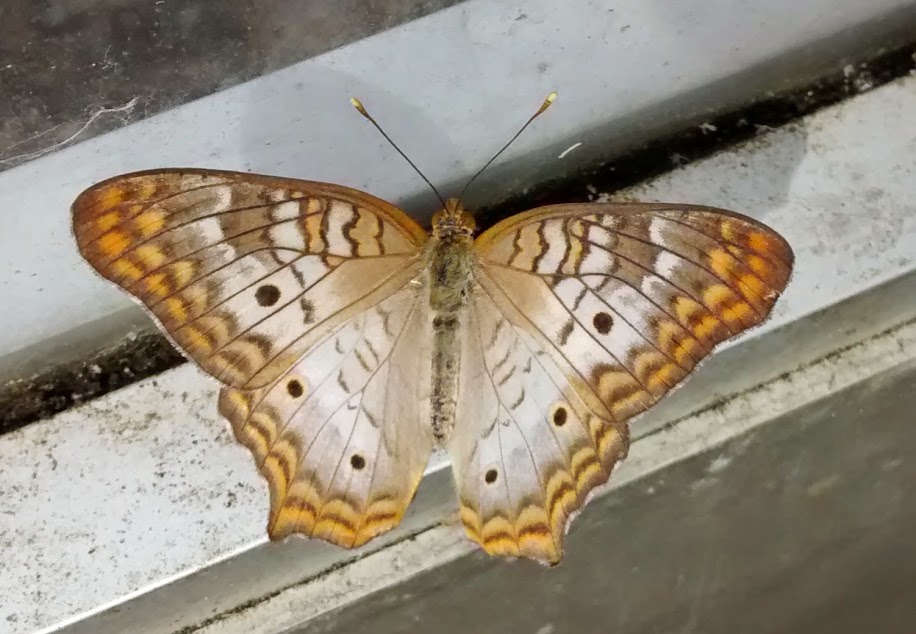
Scientific name: Anartia jatrophae
Native to:
South Texas and the deep South.
Caterpillar host plants:
Water hyssop (Bacopa), Ruellia, and Lippia.
Adult food plants:
Shepherd's needle (Bidens pilosa) in Florida; Cordia, Casearia, and composites in Central America.
Interesting facts:
Identification:
Upperside is white with light brown markings and a double row of light crescents at the margins. Forewing has one round, black spot; hindwing has two.
Southern White
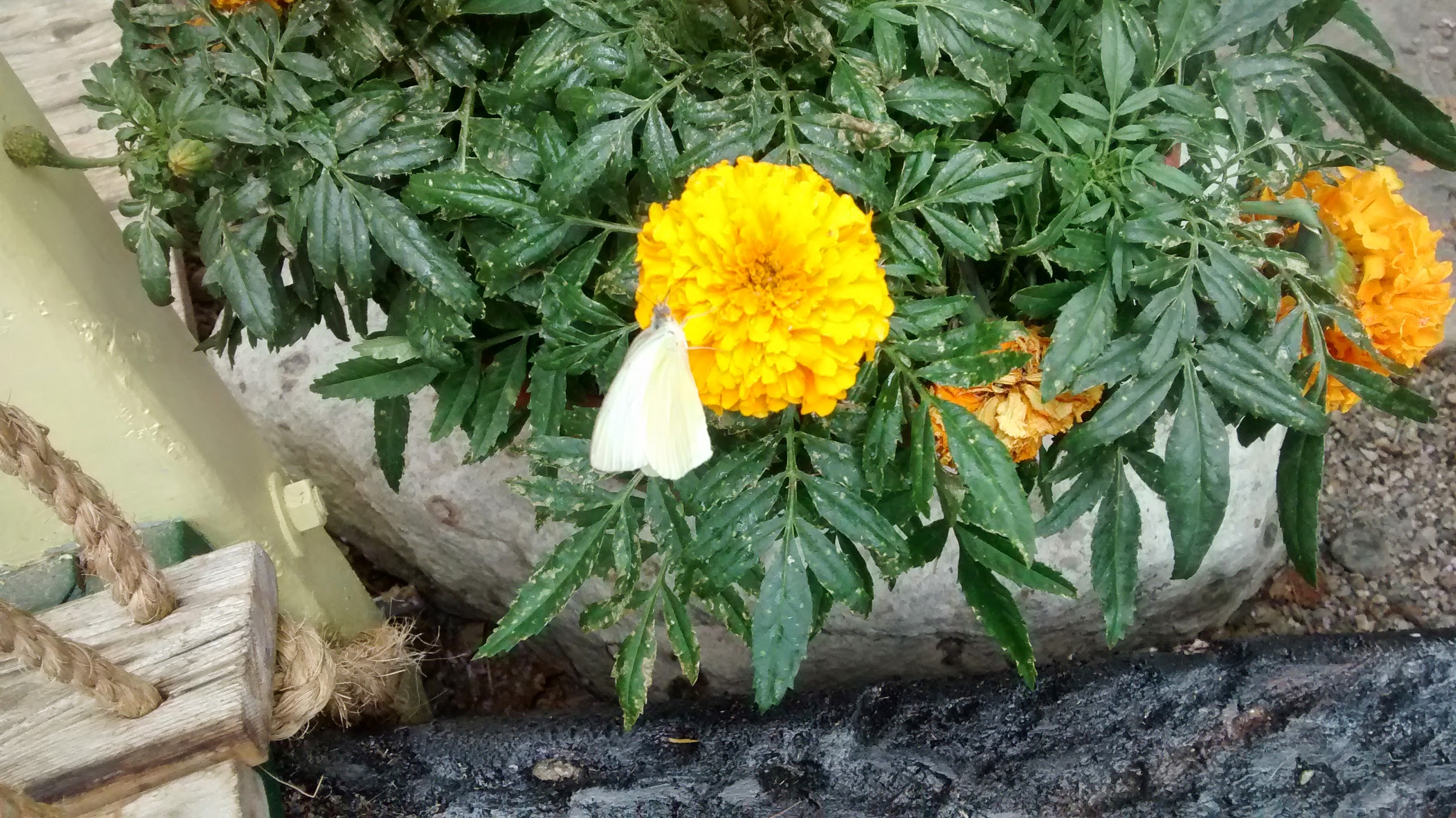
Scientific name: Ascia monuste
Native to:
South Texas, peninsular Florida, and along the Gulf Coast. Migratory along the Southeastern coast. Strays to Maryland, Kansas, and Colorado.
Caterpillar host plants:
Mustard family (Brassicaceae) plants including beach cabbage (Cakile maritima), cultivated cabbage and radish, peppergrass (Lepidium species); and plants in the caper family (Capparidaceae) including nasturtium.
Adult food plants:
Nectar from many species of flowers including saltwort, lantana, and verbena.
Interesting facts:
Identification:
Dry season (winter) form is larger and paler; wet season (summer form) is smaller and darker.
Gulf Fritillary
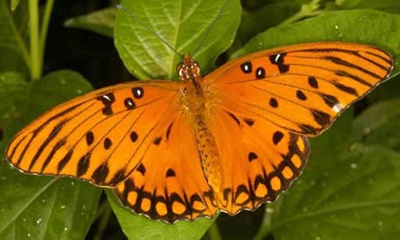
Scientific name: Agraulis vanillae
Native to:
Southern areas of the United States, specifically in many regions of Florida and Texas.
Caterpillar host plants:
Caterpillars eat the leaves of passion flowers.
Adult Food plants:
Prefer Lantana for nectar and as a main food source.
Interesting facts:
Fritillaries possess defensive glands located on their abdomens that serve as a defense mechanism especially against birds. When the butterflies sense danger in the area or are suddenly disturbed, these glands emit an odor that make birds avoid them.
Identification:
The underside of the wings is brown and speckled with silvery white dots. In contrast, the top surface layer of the wings is deep orange in color with black streaks running across.



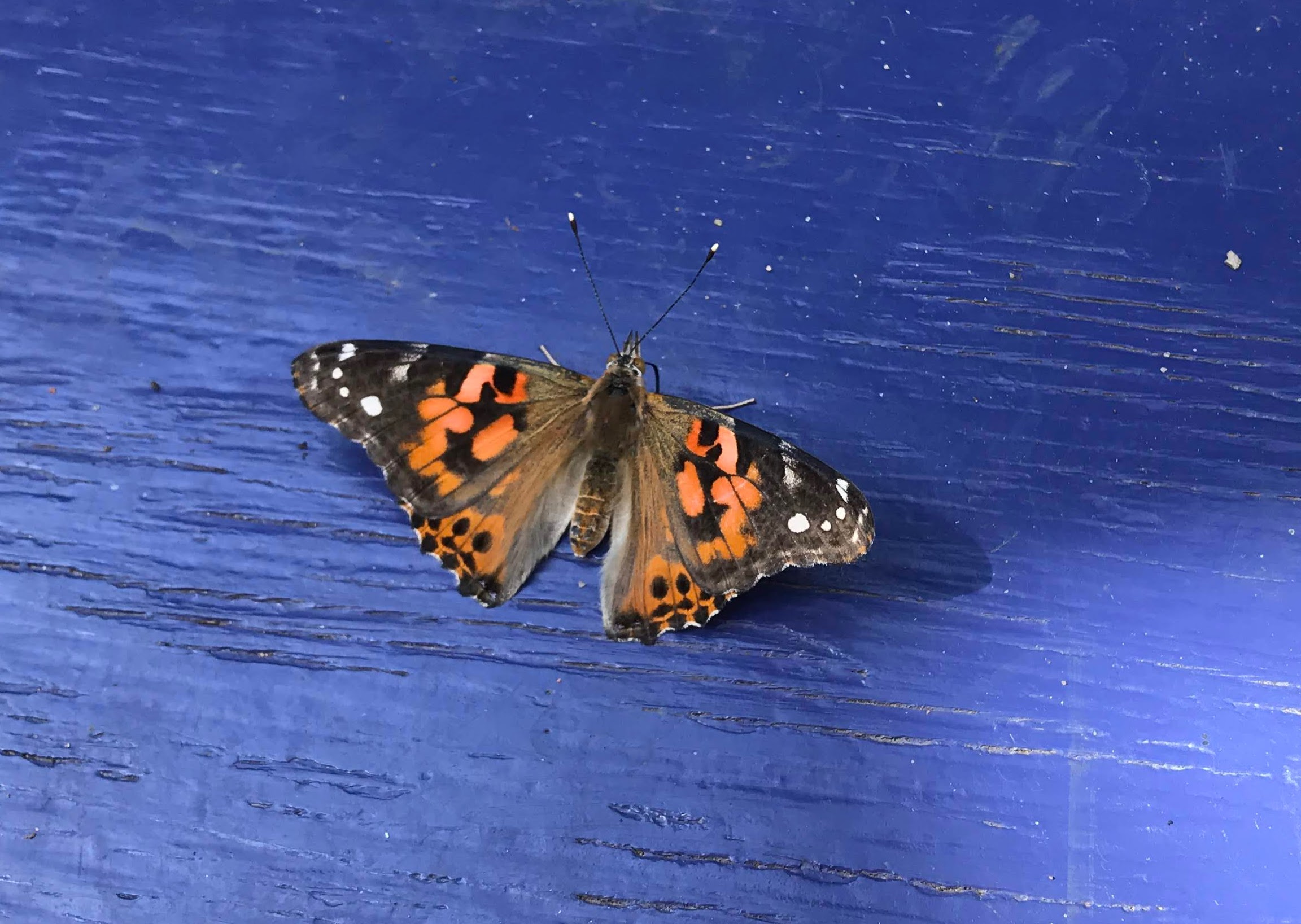
 Print
Print Email
Email